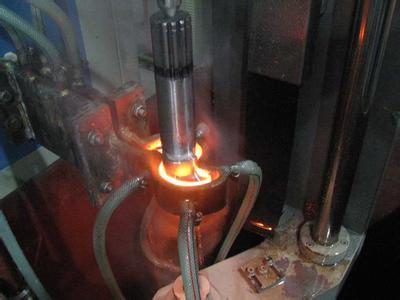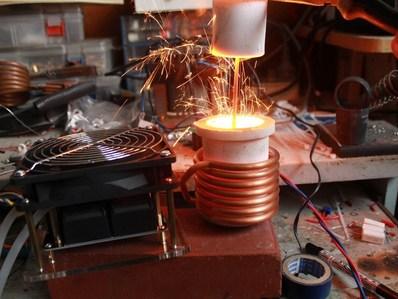- 31
- Oct
What is induction hardening? What is the effect of induction hardening for piston rods?
What is induction hardening? What is the effect of induction hardening for piston rods?
When metal smelting is carried out, quenching is necessary. However, different metals have very different quenching methods. Now you are going to show you what high-frequency hardening is, and what is the effect of high-frequency hardening for piston rods?

Piston rod induction hardening
What is induction hardening
High-frequency quenching is mostly used for surface quenching of industrial metal parts. It is a metal heat treatment method that generates a certain induction current on the surface of the workpiece, rapidly heats the surface of the part, and then quenches it quickly. Induction heating equipment refers to equipment that performs induction heating on the workpiece for surface hardening. Through rapid heating, the surface of the steel to be processed reaches the quenching temperature. When the heat is transferred to the center, it is quickly cooled. Only the surface is hardened to martensite, and the center is still unquenched. The original ductility and toughness annealing (or positive Fire and tempering) organization.

Piston rod induction hardening
What is the effect of high frequency quenching of the piston rod
Piston rod is a connecting part that supports the work of the piston. Most of it is used in oil cylinders and cylinder movement execution parts. It is a moving part with frequent movement and high technical requirements. According to Youzho Energy Saving, after high-frequency quenching of the piston rod, the surface of the piston rod can obtain a martensitic structure within a certain depth range, while the core part still maintains the state of the structure before surface quenching (tempered or normalized state) ) In order to obtain a hard and wear-resistant surface layer, and sufficient shape and toughness in the heart. When the piston rod is subjected to high-frequency quenching, it is generally subjected to intermediate-frequency or high-frequency quenching after rough grinding, induction heating to 1000-1020, and cooling with 0.05-0.6MPa compressed air injection, and the hardening layer depth is 1.5-2.5 mm , Straightening treatment after quenching. Then, it is tempered at 200-220, holding time for 1 to 2 hours, and air-cooled to room temperature, with hardness above HRC50.
Piston rod is an important part of riding quality. After high-frequency quenching of the piston rod, the hardness and toughness of its surface can be increased, thereby making the piston rod more wear-resistant.
